Do Lychee Trees Actively Grow In California?

Lychee trees do well in cold and dry weather climates. As they age, they become harder. They can be effectively grown in various areas including areas of coastal California that are free of frost. There are plenty of trees like this you will find in San Diego that have been growing for 90 plus years with no signs of slowing down.
A Lychee tree is native to China. It’s a broad leaf evergreen tree. While it is typically grown commercially for its fruit, it can also be used for other things like shade.
You will find the tree bearing a peculiar fruit with a perfume type of fragrance to it. On the outside of the fruit, you will find pinkish skin. Don’t try to eat them outside of the fruit because it’s inedible. Once opened, you will find the lychee fruit to be white and sweet to the taste.
You may be wondering how long it takes for one of these trees to start producing fruit?
A seed for the tree needs to be planted within 4 to 5 days to increase the chances of successful germination. Any delay in the planting of the seeds will decrease the viability that the seed delivers. The trees that are grown from seeds don’t grow exactly like the parent tree. Likewise, they can take a lot longer to start producing fruit. In some cases, it can take 10 to 25 years or longer.
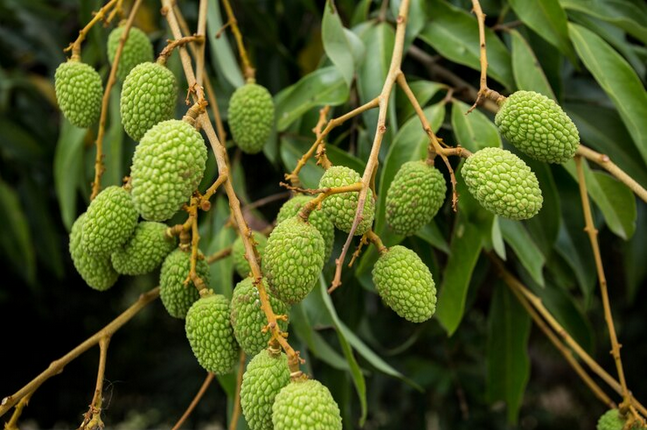
Can one of these trees grow in the state of California?
You will find these trees to be incredibly aesthetically pleasing. They feature dense and thick-rounded tops with a relatively brittle trunk and limbs to match. When they are situated in optimal conditions, they can grow as tall as 40 feet. However, they are typically a lot smaller than this. The tree bearing all of its fruit can be an incredible sight to see. These trees can be viably grown in coastal areas of California that don’t have a lot of frosts. For instance, you will find a lot of trees like this in San Diego that has been growing for more than 90 years in total. The first one fruited in 1914 in Santa Barbara. They can be grown for a short amount of time in a container.
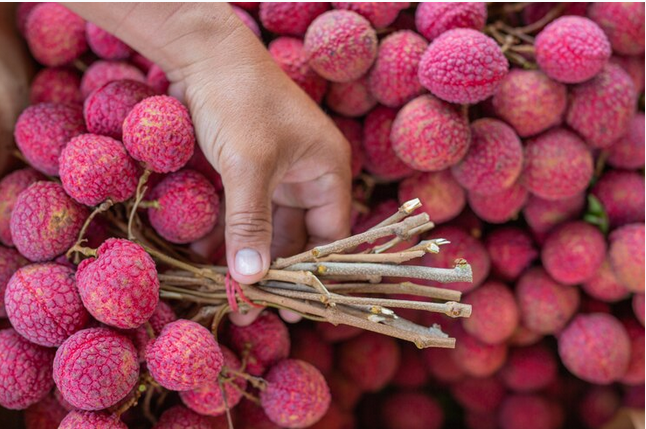
How Do You Care For These Trees?
You will find these trees do the best when they are situated in the right climate. They grow optimally in subtropical climates wherever the temperatures are cooler and dryer. Lychee trees don’t do well in areas where it’s very wet. Therefore, you’ll want to ensure you are planting your tree in soil that has adequate drainage. The tree can be successfully planted on an area with a mound to ensure the drainage is adequate.
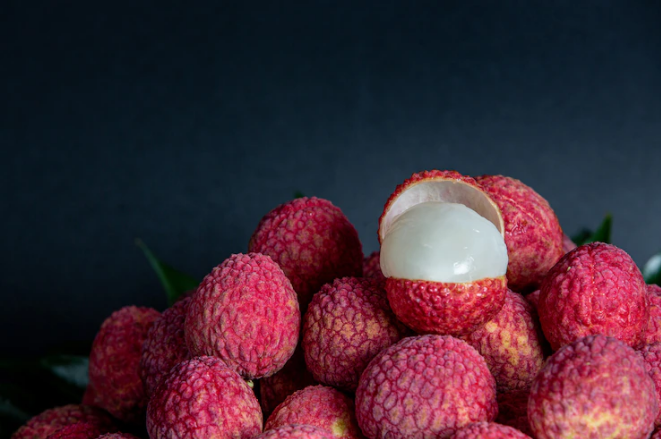
How To Plant A Lychee Tree?
These trees are optimally planted when they are situated at least 30 feet from your home or from another major structure. Do not plant one of these trees near another three. By planting these trees too close to other trees, you risk having their roots negatively impacted and their growth stunted because of it. You also risk the fruit harvest being delayed especially if the tree is shaded because of it.
If you happen to live in an area that has a lot of rain and flooding, you’re going to want to situate the tree on a mound to help with it. This can ensure you have adequate runoff so you don’t end up flooding the tree. You’ll want to plant the lychee tree in an area that gets a lot of sun exposure and in an area that is fully protected from wind gusts. These trees are relatively brittle and can suffer wind damage easily. You’ll want to plant once the frost season has passed if possible.

Tree Care:
1. Light
As mentioned, you will find these trees prosper when they have a lot of sunlight. However, it’s also important to understand these trees need to be slowly acclimated. The younger plants that aren’t used to sun exposure will suffer. You want to slowly acclimate them.
2. Soil
No lychee tree likes alkaline soil. Therefore, you will want to ensure you are using pine bark or pine needles if you’re garden soil is too alkaline. If you are looking to grow the tree as a potted plant, you will want to use acidic soil.
3. Water
You need to water the plants throughout the year. You won’t find the lychee tree having a natural winter resting period. Because of this, it’s not going to get any benefits from reducing or eliminating water exposure for a certain period like other fruit trees.
4. Temp and Humidity
Luckily, the lychee tree is fairly tolerant of cold temperatures. It can typically withstand sudden freezing temperatures. However, it’s going to do best in warmer climates with warmer temps. To come to its full bloom, it will need to be exposed to colder temps for a minimum of 100 hours throughout the winter months. This will allow them to bloom earlier in the Spring and start producing fruit by the summer months. These trees thrive in humid conditions.
5. Fertilizer
You will want to feed with a weaker liquid fertilizer during the growing season. Start to limit the fertilizer to around once per month during the winter months.
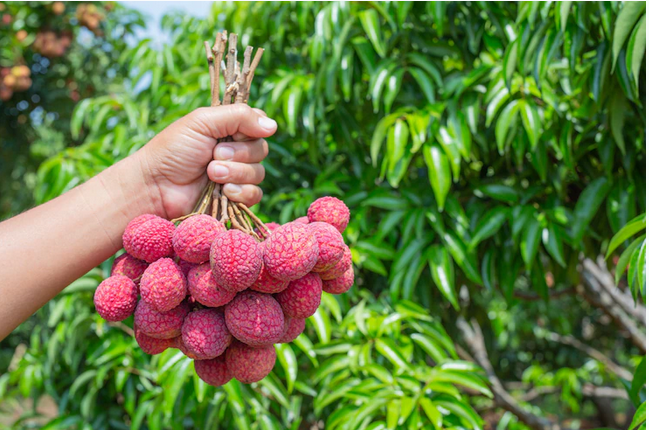
Q&A's About Lychee Tree Farming!
What Season Is Best For The Fruit?
You will find the freshest fruit comes around during May or June. It starts then and runs to around the end of September. While you can always find stores selling this fruit in a can all year, you won’t find them the freshest that way. Instead, you’ll want to get them during the season fresh.
Do Lychee Trees Produce Fruit Every Year?
In general, a lychee tree planted in South Florida will bring about 4 to 6 yearly growth flushes depending on its age and size. You’ll need to look at these things to see how to get your tree to produce the most fruit.
Can These Trees Be Grown In Pots?
As mentioned, you can grow one of these trees in a container successfully. When grown outdoors, it will get very large. If you can find a younger tree at a nursery, you can grow it in a container. You could also start from seeds.
Can You Grow A Lynchee Tree Inside?
It’s not ideal to grow it inside. Much like avocado trees, you won’t find it is the best choice for someone growing an indoor garden. It’s typically seen more as a novelty plant if you do so. It’s unlikely to produce any kind of fruit if you grow it inside. Likewise, it’s not going to grow fully. However, it can be fun to grow indoors or even if you have a greenhouse.
How Do You Prune It?
When the tree is young, you can prune it regularly. You should be doing this to promote a better and fuller shape. You’ll want to prune the branches from the center of the younger trees to continue to open up better airflow and to minimize the instances of wind damage. Whenever you are pruning this tree, you’ll want to ensure you are using clean and sharp tools to avoid damaging the tree permanently.
How do you make them last longer?
You can keep the fruit lasting longer when you refrigerate it at around 5 degrees Celcius. You’ll want to keep the fruit relatively moist by spreading them with water. This can keep their skin moist and the right color. You’ll want to store the fruit in a plastic container. They do best when sold and eaten within 3 days.
Which Tree Gives Fruit After 50 Years?
The Lychee tree is native to South China and it bears a lot of fruit in clusters. You will also find it in Hawaii and different areas in California and even Florida. You’ll find the flowering happening anywhere from mid-February to March and the fruit start appearing in clusters of up to 50 at a time.
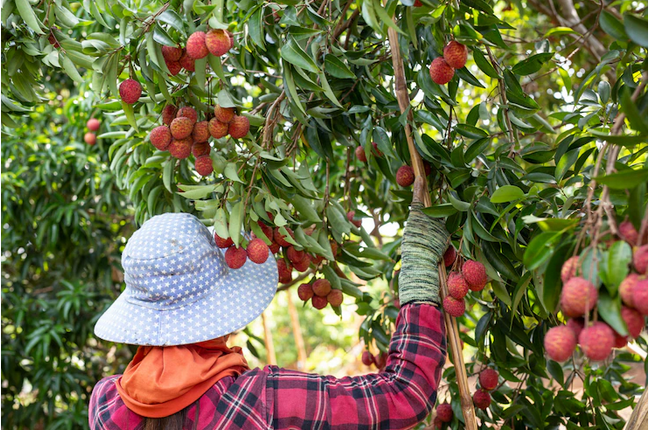
Different Types Of Lychee Trees:
You will find a lot of different cultivars of lychee used throughout the globe. Here are some of the more popular ones in the United States:
– Litchi chinensis ‘Mauritius’
This is a type that has a much more fleshy fruit. It’s a good option if you are mainly growing the tree for the fruit itself.
– L. Chinensis ‘Brewster’
This is a fast-growing tree. It is typically best suited for environments that have a lot of excess moisture. Thus, it can be good for humid environments. It’s also a good option if you are after fruit production.
– L. Chinensis ‘Emperor’
This is a good option if you are looking to grow the tree in a container indoors. It’s not as fast-growing and it’s relatively compact in comparison to the other types. Best of all, it doesn’t require nearly as much water.
For more help, please call Prime Tree Service, Lodi CA, at (209) 297-3338

